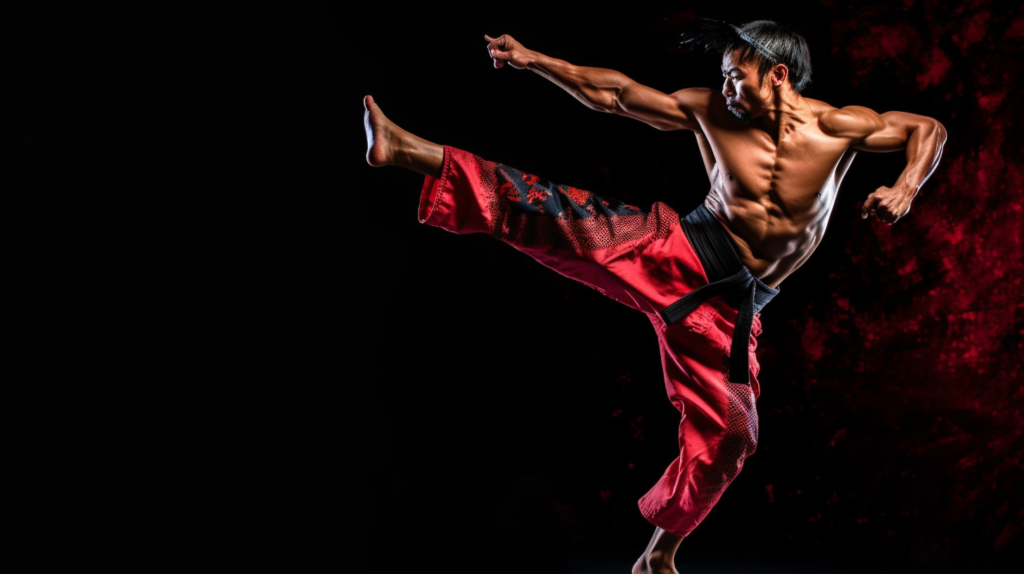Wushu Kicks – The Art of Flying Feet
Wushu is a mesmerizing martial art that captivates audiences worldwide with its explosive power, fluid movements, and gravity-defying acrobatics. Among the various techniques employed by Wushu practitioners, powerful and accurate kicks are undoubtedly one of the most impressive elements. From rapid-fire series of kicks to elegant spinning strikes, mastering these dynamic moves is essential for any aspiring martial artist.
In this comprehensive guide, we’ll delve into the anatomy of a Wushu kick – exploring the mechanics and techniques that allow you to develop powerful, accurate strikes. So get ready to take your kicking game to new heights!
Building Your Kicking Foundation – Strengthening Core Muscles
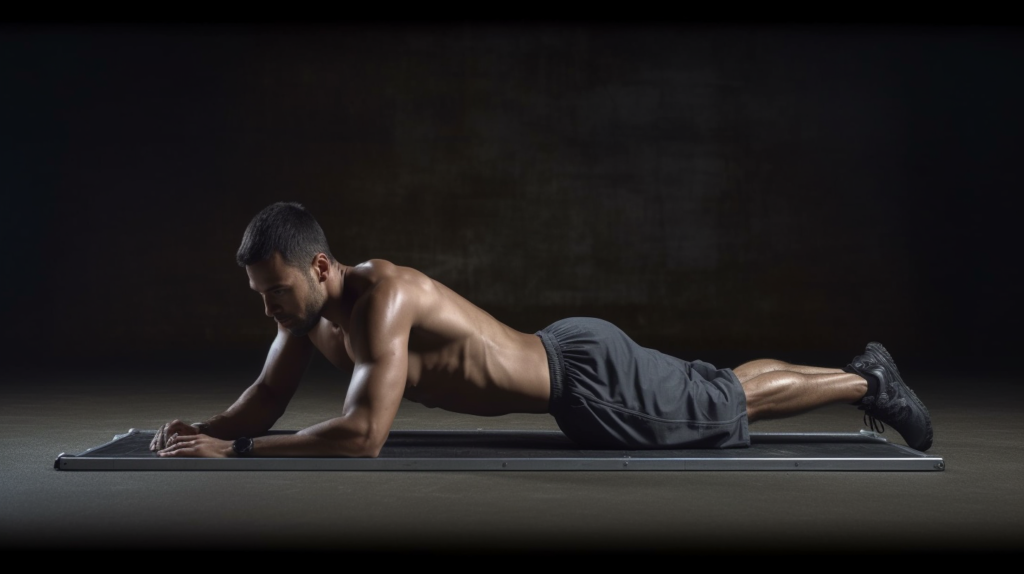
Behind every great kick lies an even greater foundation – your core muscles. These muscles include not only your abs but also your lower back and hip muscles. A strong core helps maintain balance during complex kicking combinations, generates power behind each strike, and supports proper posture throughout your movements.
To strengthen your core muscles, consider incorporating the following exercises into your training routine:
1. Planks
2. Russian twists
3. Bicycle crunches
4. Bird-dogs
5. Hip bridges
Aim to perform these exercises regularly as part of your overall conditioning program – building a strong foundation will enable you to progress more quickly in learning advanced kicking techniques.
Flexibility Matters – Achieving Greater Range of Motion

In addition to strength, flexibility plays a significant role in executing precise and powerful Wushu kicks. The more flexible your muscles and joints are, the greater your range of motion becomes – allowing you to perform impressive high kicks without risking injury. Flexibility training should focus on the hips, hamstrings, and quadriceps.
Incorporate these stretches into your daily routine to increase flexibility:
1. Seated forward fold
2. Butterfly stretch
3. Lunge with a reach
4. Standing hamstring stretch
5. Pigeon pose
Remember to warm up before stretching and maintain proper form throughout each movement – consistent practice will yield significant improvements in your overall kicking abilities.
Learning the Basics – Essential Wushu Kicks
Before attempting advanced Wushu kicking techniques, it’s crucial to master the basics. These fundamental kicks serve as building blocks for more complex moves and provide the foundation for powerful strikes.
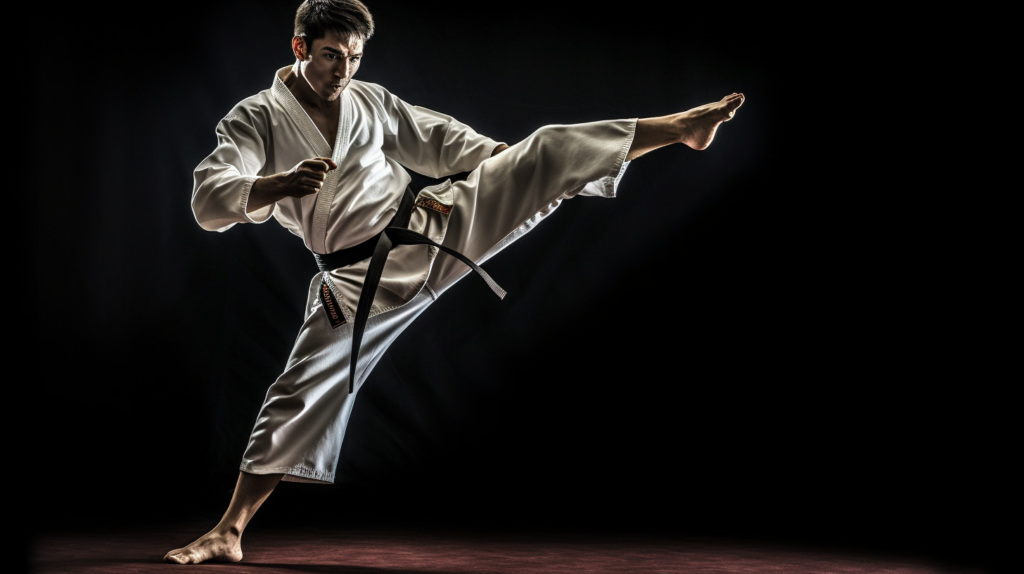
Front Kick (Zhi Tui)
The front kick is a staple in many martial arts styles, including Wushu. It involves lifting the knee of the kicking leg high in front of the body and then extending it outwards towards the target.
Side Kick (Ce Tui)
The side kick is performed by first turning your body sideways, lifting your knee up towards your chest, and then striking outwards with the heel or blade of your foot.
Roundhouse Kick (Teng Kong Heng Tui)
This popular kick involves swinging your leg upwards in a circular motion while pivoting on your supporting foot – connecting with either the instep or top of your foot on impact.
Crescent Kick (Yue Tui)
The crescent kick is executed by sweeping one leg outward in an arc-like motion – either inward or outward depending on whether you’re performing an inside crescent or outside crescent kick.
Hook Kick (Gou Tui)
The hook kick requires swinging your leg up in a similar motion to the roundhouse kick but instead of connecting with the top or instep of your foot, you “hook” your opponent with your heel.
Mastering these basic kicks ensures you have a solid foundation from which to learn more advanced techniques and combinations.
The Art of Combination Kicks – Flowing Between Strikes

In Wushu, one kick is rarely enough – combination kicks are a hallmark of this dynamic martial art. Combining different kicks into fluid sequences not only showcases technical skill but also allows for effective offense and defense in sparring situations. To master combination kicks, focus on transitioning smoothly between each strike while maintaining proper form and balance.
Some popular Wushu kicking combinations include:
1. Front Kick + Roundhouse Kick
2. Side Kick + Hook Kick
3. Crescent Kick + Roundhouse Kick
As you become more proficient with basic kicks, experiment with creating your own combinations – the possibilities are endless!
Adding Flair – Spinning Kicks and Jumping Kicks
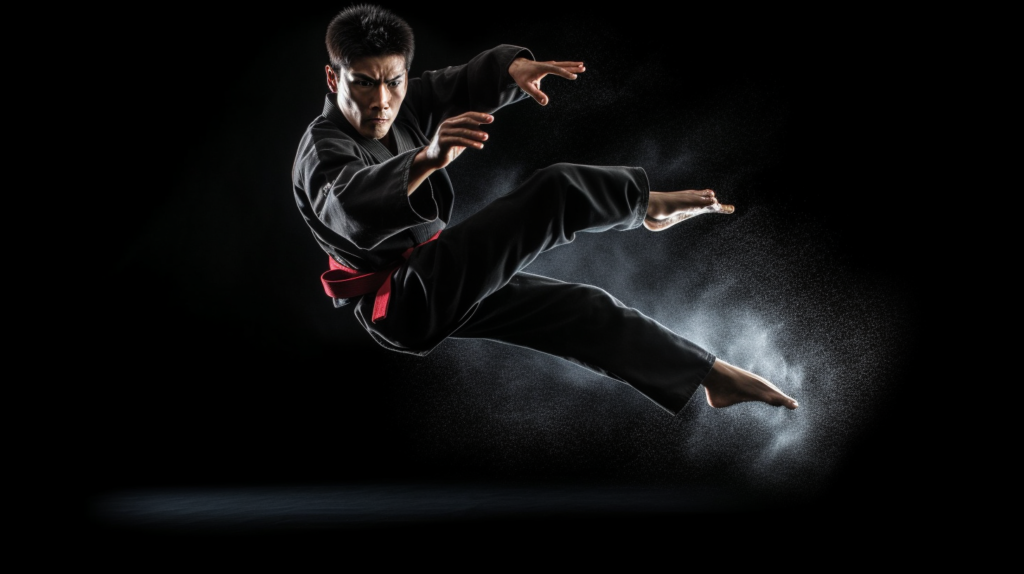
Once you’ve built up strength, flexibility, and mastered the foundational Wushu kicks, it’s time to add some flair to your repertoire. Spinning and jumping kicks require exceptional balance, coordination, and timing but are well worth the effort as they add an extra level of excitement to your performances.
Some popular spinning and jumping Wushu kicks include:
Tornado Kick (Xuan Feng Jiao)
The tornado kick involves spinning around on one foot before launching into a powerful roundhouse kick using the other leg.
Butterfly Kick (Hu Die Jiao)
The butterfly kick requires leaping sideways into the air while swinging both legs upwards in a scissor-like motion – resulting in an impressive aerial maneuver.
Jumping Front Kick (Tiao Zhi Tui)
As the name suggests, this kick involves leaping into the air before executing a powerful front kick towards your target.
Spinning Hook Kick (Xuan Feng Gou Tui)
Similar to the tornado kick, the spinning hook kick requires spinning around on one foot – but instead of connecting with a roundhouse strike, you extend your leg outwards and “hook” your target with your heel.
Regular practice and dedication will help you incorporate these flashy techniques into your Wushu arsenal – leaving spectators in awe!
Perfecting Your Technique – Tips for Powerful, Accurate Kicks
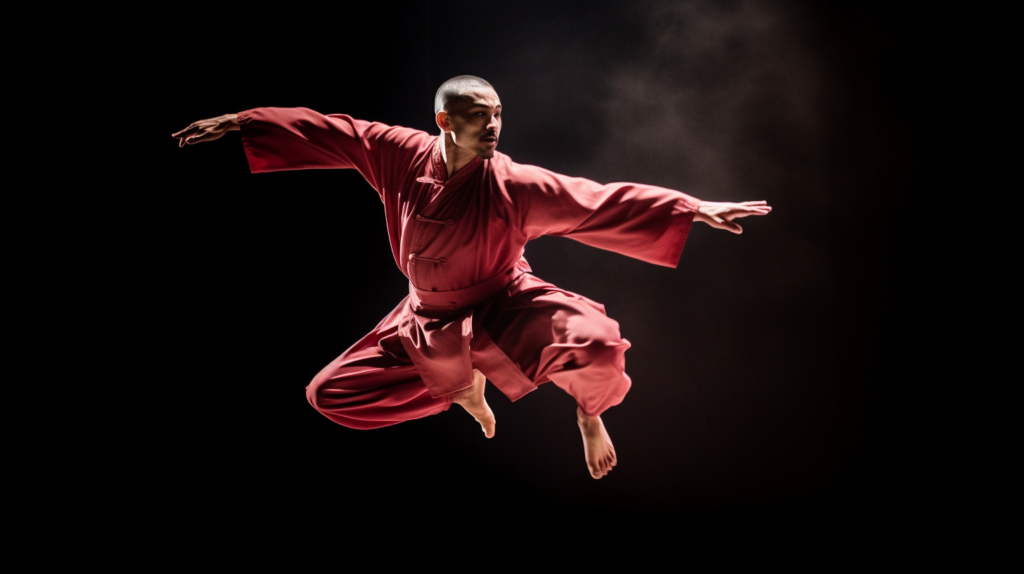
To truly excel at Wushu kicking techniques, it’s essential to focus on improving power and accuracy. Here are some tips to help you achieve this:
Keep Your Supporting Leg Stable
A stable supporting leg is crucial for maintaining balance and generating power during kicks. Focus on keeping your knee slightly bent and maintain a strong grounding through your foot.
Engage Your Core
As mentioned earlier, a strong core is vital for effective kicks. Engaging your core muscles throughout each movement will increase power and control.
Exhale on Impact
Exhaling during the point of impact can help generate additional force behind each strike while also ensuring proper breathing throughout your combinations.
Practice Precision
Aim to strike specific targets during practice sessions – whether it’s a training pad or an imaginary spot in mid-air. Focusing on precision will translate into more accurate kicks during performances or sparring situations.
Train Regularly
As with any martial art or physical skill, consistent practice is key to mastery. Incorporate regular kicking drills into your training routine to see continuous improvements in strength, flexibility, technique, and accuracy.
The Path to Becoming a Kicking Prodigy Begins Here
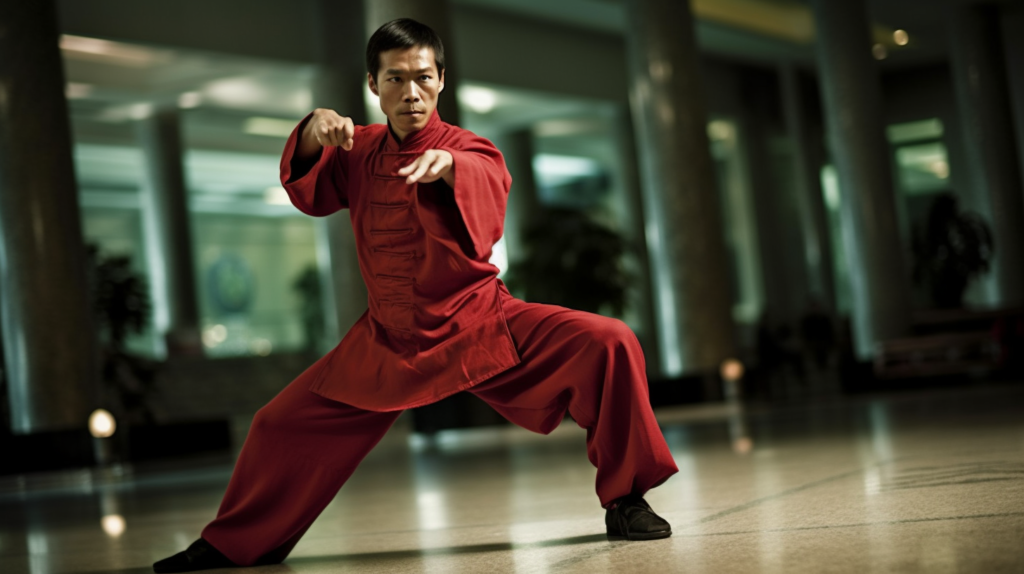
The world of Wushu offers a vast array of kicking techniques to explore and master. By building a strong foundation through strength and flexibility training, mastering basic kicks, experimenting with combinations, and adding spinning or jumping elements to your repertoire, you’ll be well on your way to becoming a true Wushu kicking sensation.
With dedication, practice, and focus on the mechanics and techniques outlined in this guide, you’ll soon develop powerful, accurate strikes that will leave opponents (and spectators) speechless. So lace up those training shoes and prepare for liftoff – it’s time to make your mark in the exhilarating realm of Wushu kicking!

